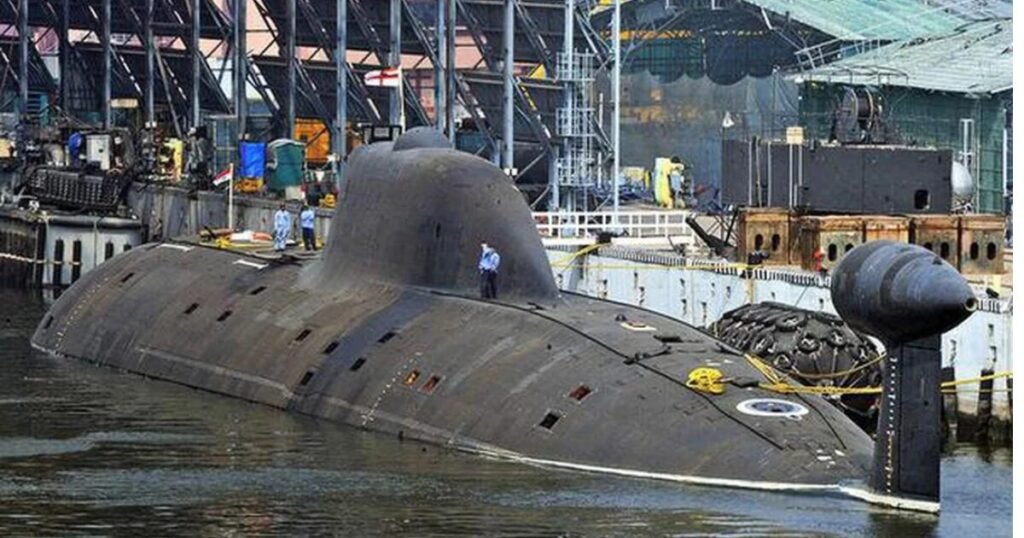
In a significant step which further cements India’s leadership in defense capabilities, the country has quietly gone into operational profile with its fourth nuclear-powered ballistic missile submarine (SSBN) on October 16, 2024. As elevated tensions in the Indo-Pacific blend with the emerging threats from adversaries, an attack beneath the waves is to form part of India’s nuclear deterrence to reassure the Indian leadership about their intent to push the deterrence to new heights.
The S4, a new SSBN, is built out of the Ship Building Centre in Visakhapatnam. Having nearly 75 percent indigenous content, S4 represents one of the major strides forward in India’s quest to build self-reliant defense technologies. Fitted with 3,500-kilometer-range K-4 ballistic missiles launched from vertical launching systems, the S4* forms an important part of India’s nuclear strike force as the country continues to strengthen its second-strike capability.
Strengthening India’s Nuclear Deterrence
This is part of the much bigger defense strategy India has undertaken against its potential opponents. With Defense Minister Rajnath Singh commissioning the second SSBN, INS Arighat, in August last year, the S4* marks a proud moment for the Indian Navy as it awaits the third SSBN, INS Aridhaman, to be commissioned next year.
India therefore seeks to strengthen nuclear deterrence, judging emerging threats from the Indo-Pacific region. On 9 October, the CCS cleared building two more nuclear-powered attack submarines for their deterrence against rivals like China whose military presence in the IOR has increased significantly recently.
Rajnath Singh’s Speech on India’s Maritime Security
Defence Minister Rajnath Singh inaugurated the Very Low Frequency (VLF) Naval Station in Vikarabad district of Telangana just a day ahead of the launch of S4*. This facility will strengthen the secure communication of Indian Navy’s submarines and command centres that make crucial contributions in the safeguarding of maritime interests.
Indian Navy is the biggest guarantee of peace in the Indian Ocean Region. Maritime security is a collective effort; All friendly countries must work together to maintain peace & order in IOR,” Singh writes on X, formerly Twitter. Under this message lie the underpinnings of India’s commitment to fostering cooperation with neighboring nations while enhancing its own defense posture.
Indigenous Defense Capabilities on the Rise
The 75 percent indigenous content of the S4* submarine itself signals a giant leap in India’s defense manufacturing sector as the country progresses towards greater self-reliance. The K-4 ballistic missiles aboard the S4* puts India on a very powerful footing, as they have a range of 3,500 kilometers. Comparatively, while the first SSBN, INS Arihant, carried K-15 missiles with a mere 750-kilometer range, the S4* and other follow-up boats will carry only K-4 missiles, extending the range and endurance of the missile.
The S4* could remain underwater for weeks; “only” food supply, crew fatigue, and maintenance would be limitation factors, of course. With almost unlimited range, this new addition to the Indian Navy will be crucial for long-range patrols and national security to be guaranteed.
Upgrades in the Indian Submarine Fleet in the Future
Beside scaling up the SSBN fleet, India is also strengthening conventional submarine forces. The sixth diesel-electric Kalvari-class submarine made by the 636.3 is to be inducted in December 2024; this would further enhance the operational preparedness of the Indian Navy.
By 2028, India will also add a Russian Akula-class nuclear-powered attack submarine to the list of its array of advanced submarines. India has sealed deals with French Naval Group in an effort to counter Chinese warships patrolling the Indian Ocean by producing next-generation diesel attack submarines.
The Strategic Shifting to Nuclear Submarines
In that light, India’s decision to have nuclear-powered submarines instead of the third aircraft carrier in the series is a reflection of changes in modern warfare. With greater threats of long-range missiles from China reaching surface vessels, India is concentrating more on underwater platforms with better survivability and deterrence.
Conclusion: This launch represents a significant landmark in India’s defense journey. Just as the country continues to look towards bolstering its naval capabilities, it is actually reiterating the reassurance of maintaining peace and stability in the Indo-Pacific while also preparing for adversarial threats. Native technologies as well as strategic defense assets under development will then be pivotal in securing India’s maritime interests in the foreseeable future.
Stay tuned to ibizznews for more updates.




